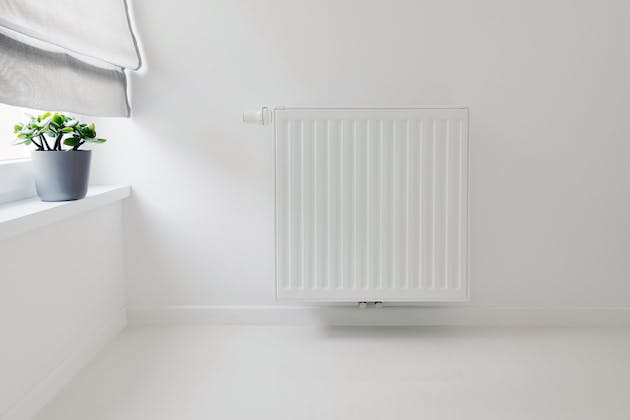A modern radiator has few moving parts, yet they are all critical. The valves that link the hot water pipes to the radiator are typically the radiator's only moving parts. You may have heard about TRV, Manual, and Lock-shield valves, and Boiler Boys London will discuss them all in this blog post.
What are thermostatic radiator valves?
TRVs, or thermostatic radiator valves, allow you to adjust the temperature of your radiators. They allow you to control the temperature of individual rooms one at a time. As such, they are a low-cost means of increasing the efficiency of your heating system and minimising your fuel expenditures, as TRV prices generally range from between only £10 and £30!
What are the different types of TRVs?
Angled TRVs
Regardless of whether the piping rises up from the floor or out of the wall, most typical radiators will employ an angled TRV.
Straight TRVs
Those with plumbing that comes out of the floor and are generally only available with designer radiators and towel rails.
Corner TRVs
When suitable with the radiator, Angled TRVs are sometimes chosen over Angled TRVs.
8mm/10mm/15mm sizes
Most TRVs will be installed on 15mm pipe, which is the common size for heating system piping. For 'microbore' pipe systems, 8mm and 10mm are employed.
Lock Shields
The majority of typical radiators feature two outputs. A TRV is installed on one outlet, and a 'lock shield' is installed on the other.

What are TRVs most commonly used for?
Thermostatic radiator valves (TRVs) are used in office and apartment buildings to provide zonal heating from a central boiler. The TRV, which features a temperature sensor, will automatically modulate the heat output from the radiator to help keep the room temperature consistent. The TRV can be inclined or straight depending on how it is mounted to the radiator, and it can be elegantly crafted in antique brass, copper, or nickel.
How do you use a Lock Shield valve?
Adjust the lockshield valve on the side of the radiator opposite the on/off valve to balance the output of your heating system. The lockshield is a plastic covering that goes over the valve to keep you from accidentally altering the setting once you've changed it. Heat output balancing is a rather simple technique that you should be able to do. If we are doubtful, we will let you know.

Can radiators be controlled by a smart home system?
Yes - smart radiator valves exist! They can come as part of a "smart home," central heating system, and provide you with more control over your heating. Smart room thermostats that connect to your wifi and can be managed by a laptop, tablet, or smartphone are also available. Home automation has increased in popularity in recent years due to the potential savings on heating costs. The good news is that these systems can work with any kind of radiator that you already have in your home; be it traditional radiators; compact radiators; as well as more sophisticated, designer radiators.
How do radiator valves work with designer radiators?
Speaking of designer radiators, is it still possible to have a TRV on these radiators too? The answer is yes! Designer radiators are made of various materials, including stainless steel and, in some cases, aluminium. These radiators normally have the same radiator connections, with side inlets that connect to the valves, making it still possible to regulate the heat with these radiators, too. They come as horizontal (traditional) or even vertical radiators. The primary difference between horizontal and vertical radiators of the same type is purely aesthetic: vertical radiators are taller than wide and thus better in a small room, whereas horizontal radiators are wider than taller and thus easier to hide behind furniture for a minimalist home decor design.
Get in touch for radiator installations
If you live in Ealing or a nearby neighbourhood such as Hanwell, Northfields, or Pitshanger Lane and would like to discuss our central heating installation services, please contact us.
To make an appointment with us, please phone 07402 806032 or send an email to info@boilerboyslondon.co.uk. Alternatively, you may use our website's contact form.


